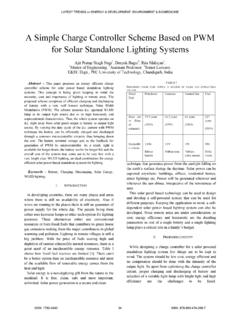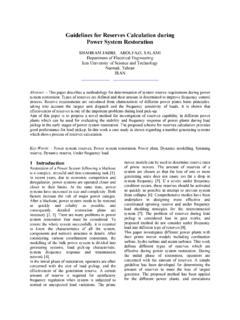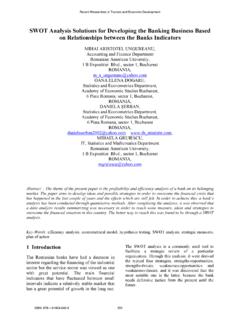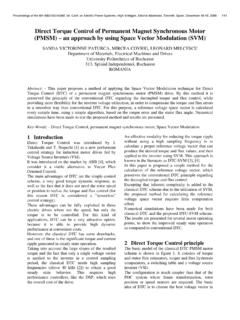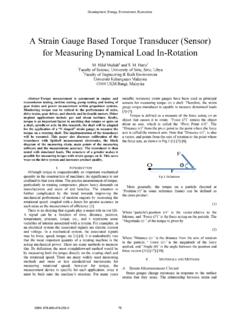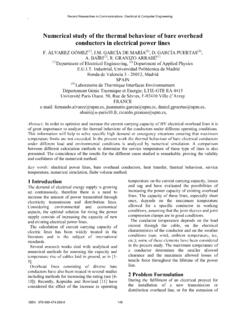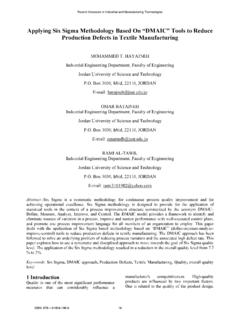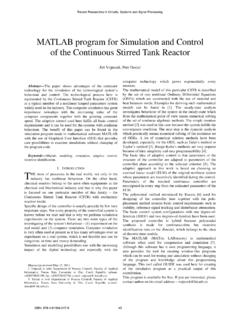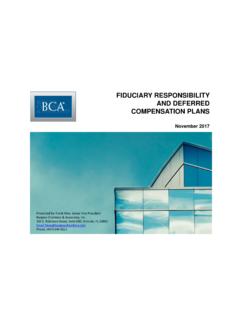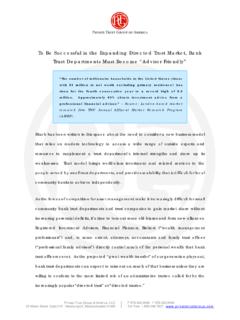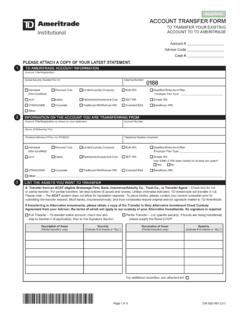Transcription of The commercial negotiation framework - WSEAS
1 The commercial negotiation framework MARIUS PETRESCU, ROXANA DINESCU, DELIA POPESCU Management Valahia University of T rgovi#te Bd. Regele Carol I, Nr. 2, T rgovi#te ROMANIA @nsa, , Abstract: - Ne gotiation is the activity during which people deal with their differences and depending of the individual skills this process may end in success for a side or another or both. commercial negotiation is a particular branch of negotiation . commercial negotiation has three main elements involved seller, buyer and product/service.
2 This process is being governed by one important factor and that is price. Given he fact the commercial negotiation is present into the contemporary life more than ever it is important for both sides to improve the negotiating skills for being able to handle this activity with success. This article presents techniques, tactics and methods that help the actors involved in the activity to achieve their proposed goals. Key-Words: - commercial negotiation , sale, buy, techniques, tactics, methods 1. Theoretical introduction commercial negotiation regards the assembly of measures meant for closing a deal between two or more parts.
3 The business may consist in selling, ordering, transactions, etc. it always includes a o delivery of goods and/or services and a counterpart, mostly in monetary shape (the price). The counterpart has on the other side many different aspects and in general it has different conditions (the delivery deadline, the payment deadline, contractual obligations, etc) The commercial negotiation represents actually a particular side of the negotiation process. The schemes that can be elaborated for negotiation , in general, are applied, after their adaptation to commercial negotiation .
4 From its structure point of view, the commercial negotiation consists in three fundamental elements: 6 the actors: the seller and the buyer; 6 the differences: of objective, information, statute, values; 6 the desire of making an agreement; From its dynamics point of view (mechanisms and resorts) the commercial negotiation can also be analyzed starting from a field of forces in which: 6 stakes, attitudes and prices interfere; 6 the previous elements confront, together with strategies, techniques and tactics; 6 the negotiators behavior are being defined; 6 the styles of negotiation come into place.
5 It results that the fundamental problems of negotiation in general (the mainly integrative or distributive orientation: its efficiency, its level of determining the results, the effects and incidents in time) are to be found also in the commercial negotiation . The commercial negotiation presents a few dominant characteristics: [1]. 1. The commercial negotiation is dominated by the existence of the product/service and of its attributes (price, quality, terms, payment conditions, warrantees etc).
6 If the social negotiation has a powerful ideological orientation and in the international negotiation there is a powerful ideological orientation, in the commercial negotiation the environment identifies itself with the competition. negotiation places face to face actors that search for a mutual adjustment of their economic needs, concretized in a product/service. This omnipresence of the product puts some color into commercial negotiation with technical aspects involved (the selling/buying techniques).
7 The negotiator becomes tributary not only to his reputation but also to his organization, his credibility having two distinct components: his own credibility and that of his product. It results that in commercial negotiation there are involved both objective aspects (which are defined according with the market) and relational aspects (concretized in interpersonal aspects). 2. The commercial negotiation determines the appearance of some tension between the need of closing a deal unilaterally advantageous and that of long term fidelity.
8 All these involved, the commercial negotiation is never strictly distributive but it is rather mixed. 3. The actors of commercial negotiation share principles, values and a common language which determines in creating a specific ambience to this type of negotiation and in correspondence of a certain negotiator profile. Proceedings of the 5th WSEAS International Conference on Economy and Management Transformation (Volume I)ISSN: 1792-5983120 ISBN: 978-960-474-240-04. The interdependence between suppliers and beneficiaries can be interpreted as a constraint but also as a source of opportunities.
9 These characteristics that are to be found in the same shape in other types of negotiations represent the specificity of commercial negotiation in general. There are though differences between the various situations of negotiation . Between the economic negotiation carried on different levels there is a tight dependence. Thus, the macroeconomic negotiation creates a favorable frame of development of the microeconomic negotiations between firms, and these. On the other side, create a climate proper for the deepening of collaborations on macroeconomic level.
10 Determining the general framework of commercial negotiation means: 6 knowing the general situation and the global economic, political and military environment; 6 the delimitation of the external juridical framework6 international law, agreements bi and multilateral etc; 6 knowing the strategy of development and the balance sheet of the respective county, the customs taxes in import, profitableness indicators etc; 6 knowing the situation regarding the country of potential partners (by studying a monograph with up to date information).
